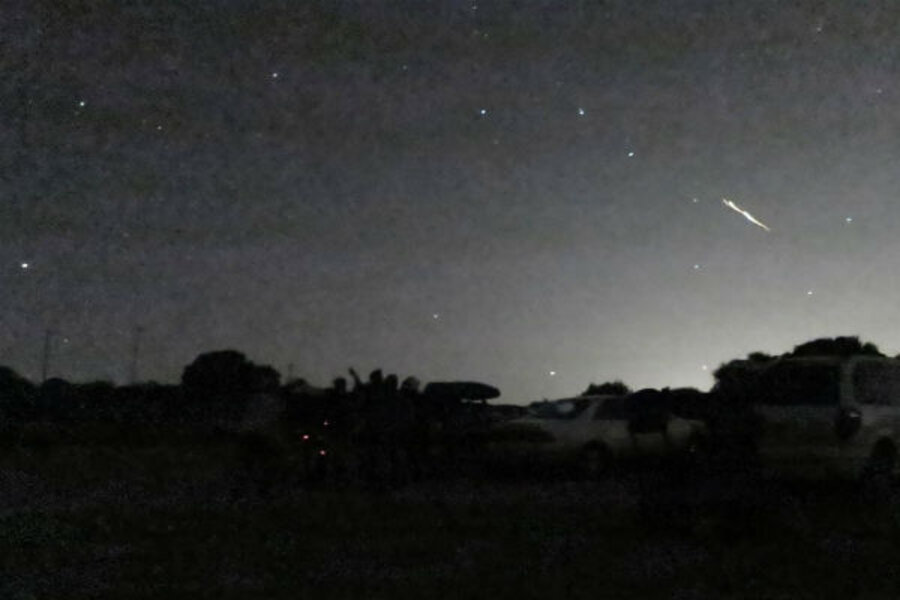Orionid meteor shower: Watch for fireballs during weekend peak
Loading...
Skywatchers in the northern and southern hemispheres are in for a treat overnight Saturday, when the annual Orionid meteor shower – an intimate encounter with remnants of comet Halley’s tail – is expected to peak.
Weather willing, at least 25 meteors an hour should be visible in the predawn hours Sunday morning. By then, a crescent moon will have set, allowing a larger number of fainter meteors to stand out against the night sky.
But NASA’s all-sky cameras already are detecting meteor rates that suggest the show could be better, perhaps approaching 60 meteors an hour, says Bill Cooke, a meteor specialist at the NASA’s Marshall Space Flight Center in Huntsville, Ala., and head of the agency’s Meteoroid Environment Office.
“I’m cautiously optimistic,” he says of the shower, which began Oct. 17 and runs through Oct. 25 at a sky above you.
As if on cue, a fireball visible throughout much of central and southern California streaked across the sky Oct. 17, shortly before 8 p.m. Pacific Daylight Time. Observers reported three sonic booms tied to the fireball after it disappeared.
However, the event may have had little to do with the meteor shower. Long-time meteor observers, including Mike Hankey with the American Meteor Society, point out that meteors from comets tend to be tiny grains of ice and dust. This reflects the composition of the comets that shed the detritus as they make their closest approach to the sun and heat up. This material vaporizes at very high altitudes.
The object that plunged to Earth Wednesday evening – which some witnesses said broke into fragments as it plunged – was more likely a chunk of asteroid. The sonic booms people heard indicate that it reached the lower atmosphere.
Even so, Orionid meteoroids generate fireballs as well, Mr. Cooke says, owing to the high speeds at which they enter the atmosphere. At 148,000 miles an hour, these meteoroids are outpaced only by meteoroids associated with the Leonid shower, which appears each November.
“If I’m blazing into the atmosphere fast, I don’t have to be very big to leave a brilliant mark in the sky,” he says.
The fireballs the Orionids generate occur at altitudes of about 60 miles. A fireball is defined as any meteor brighter than Venus. NASA has logged at least two Orionid fireballs so far during this month’s shower.
The shower takes its name from the constellation Orion. The shower’s radiant – the region of the sky from which the meteors appear to emerge – appears just to the left of Orion’s right shoulder, marked by Betelgeuse, a red supergiant star and one of the largest, brightest stars in the night sky.
Part of the shower’s appeal lies in its radiant’s classy location. It sits surrounded by some of the most recognizable constellations in the night sky: Gemini; Orion, with his belt and sword; and Canis Major, Orion’s hunting companion. Canis Major hosts the double star Sirius. At 8.6 light-years from Earth, Sirius A, the brightest of the two, outshines all the other stars visible to the naked eye.
So while you wait for a meteor, you still have other cosmic eye candy to enjoy.
Beyond the beauty, Cooke adds, is the fact that the meteors are from Halley’s comet, providing an annual show that outclasses the last appearance of Halley itself in 1986, which he witnessed, and is likely to outclass Halley’s next appearance in 2061.
“This is my consolation,” Cook says with a chuckle. “If I can’t see a good Halley’s comet, at least I can see pieces of it burning up in the atmosphere.”





